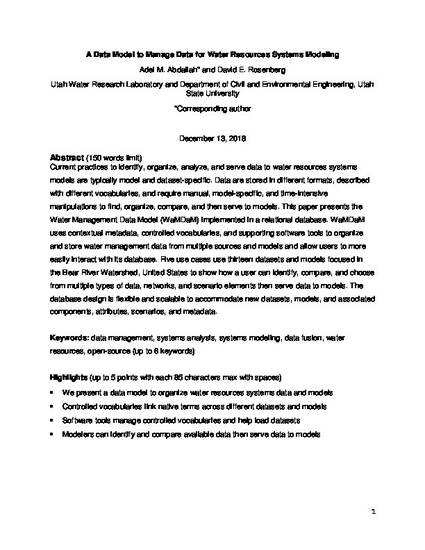
Current practices to identify, organize, analyze, and serve data to water resources systems models are typically model and dataset-specific. Data are stored in different formats, described with different vocabularies, and require manual, model-specific, and time-intensive manipulations to find, organize, compare, and then serve to models. This paper presents the Water Management Data Model (WaMDaM) implemented in a relational database. WaMDaM uses contextual metadata, controlled vocabularies, and supporting software tools to organize and store water management data from multiple sources and models and allow users to more easily interact with its database. Five use cases use thirteen datasets and models focused in the Bear River Watershed, United States to show how a user can identify, compare, and choose from multiple types of data, networks, and scenario elements then serve data to models. The database design is flexible and scalable to accommodate new datasets, models, and associated components, attributes, scenarios, and metadata.
